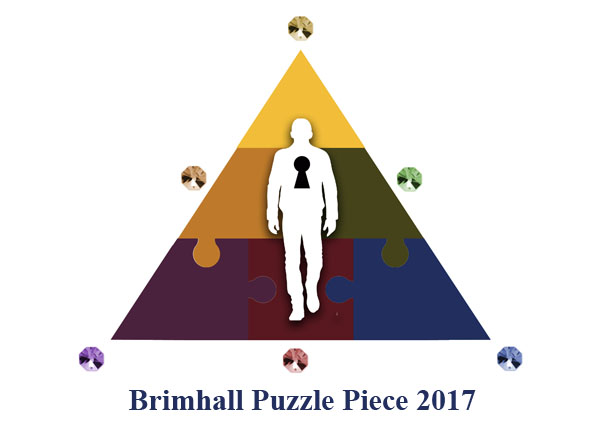
How to address Thyroid Dysfunction
February 6, 2017 Puzzle Piece
I had a person ask me if I had heard of and could help a Central Hypothyroid Problem.
I am going to way oversimplify that this condition involves the
pituitary and they thyroid differently than the standard hypothyroid.
The symptoms can be feeling severely stressed, weight gain,
suffering from frequent headaches, hair thinning, gets cold easily and
can have the outer one to two thirds of the eyebrow falling out. A
conventional medical practitioner may suggest you go on an
antidepressant, take Tylenol for the headache and wear a hat for the
hair loss!
The standard of care for medicine is to look at symptoms
individually and treat them separately. Especially if the symptoms don't
seem to be connected. I have often said the DC, besides meaning a
Doctor of Chiropractic, also means the Doctor of CAUSE.
To only identify symptoms and only treat the causes, makes you
miss the big picture. When identifying causes, which include
subluxations of the spine and the craniosacral mechanism, must include
the causes of subluxations. That is where the 6 Interferences and the 6 Steps to Wellness fit in any patient with any type of dysfunction.
Causes of symptomatic expression can come from physical,
chemical, electromagnetic, toxins, allergy/sensitivity or emotional
trauma. To correct the causes, they have to be first identified and
then treated systematically.
In the case of the present patient, and any patient with a
group of similar symptoms stated, one of the first things I'd do is
check their thyroid with all SIX STEPS.
This little organ has a huge impact on how you feel. If it's not working up to par, you could have more than 200 different symptoms. If the thyroid is malfunctioning, you whole wellbeing is being challenged.
Let’s elaborate a little: Low energy, abnormal heart rate, poor
memory, hair falling out, thinning eyebrows, high blood pressure,
weight gain, cold all of the time, being extra emotional or feeling
extremely stressful and another 180 + symptoms may be present.
The fact is, low thyroid function is one of the most commonly
misdiagnosed conditions. According to a major study in the Archives of Internal Medicine, 13 million Americans are undiagnosed. They're totally unaware they have thyroid issues.1
For those who do get a proper diagnosis, the standard treatment
is the synthetic drug Synthroid. However, Synthroid can cause symptoms,
too. In fact, there is not a drug that does not cause symptoms in many
patients.
Your thyroid is a butterfly-shaped gland in the front of your neck. It produces two thyroid hormones — thyroxine (T4) and triiodothyronine
(T3). T3 is the active form of the hormone. It's much stronger than
T4. I like to tell patients T4 is the Wood and T3 is the Fire. It takes
selenium in the diet or supplementation to convert T4 to T3.
Your body needs the right balance of these two hormones to
regulate your metabolism. If your metabolic rate is too slow, your
thyroid converts more T4 to the active T3. If your metabolism is running
too fast, your body slows down the conversion.
A blood test from your doctor should tell you whether your
thyroid is underactive. But the sad truth is most doctors misread the
laboratory results. They'll tell you your numbers are in the "normal"
range even when you have symptoms. This is one reason we recommend our
doctors use the Brimhall Advantage SBN blood testing that has optimal
ranges and gives a color coded computer printout of the findings. (Call
Jason at 338-4883 for more information)
You can test yourself at home by checking your basal body temperature. To see if you might have an underactive thyroid:
- Keep a glass thermometer — preferably digital — next to your bed.
- As
soon as you wake up — before you get out of bed — tuck the thermometer
in your armpit for 15 minutes. Any movement will affect the reading, so
lie still and relax.
- Write down your temperature.
- Do this for three days in a row.
- After three days, add up the numbers and divide by three.
If your average temperature is below 97.6, there's a good chance you have low thyroid.
A great book to read is Iodine by David Brownstein,
MD. This book is especially important because the next piece of the
puzzle is to use Iodine where indicated, which is over 90 % of the time.
Dr Brownstein and Dr Abraham give extensive research on how to balance
the thyroid. They find iodine is necessary in over 90% of the cases
treated.
We recommend the use of Opti-Iodine, which has
both organic and inorganic iodine, plus selenium and molybdenum. It is
the most balanced iodine I have seen available.
We also use Opti-Thyroid, which is a whole
food, predigested formulation that is balanced synergistically to
support thyroid function at each level of nutritional support.
Opti-Adrenal is also important. Adrenal
stress yields excess cortisol, which inhibits thyroid function. It
especially prevents optimal conversion of T4 to T3. All three of these
recommended products are at the top of nutritional support. I have
formulated over 200 nutraceuticals and these are the best of the best.
We have done complete Puzzle Pieces and webinars on thyroid function and these three advanced nutrient formulations.
Remember if your thyroid is sub-optimal, it affects every cell
and every function in the body. Another major consideration is heavy
metal and toxic halogen toxicity. These and other triggers and
mediators can cause autoimmunity. I have formulated homeopathic detox
products called Opti-Metals Detox and Opti-Enviro Detox. These should be considered with each case.
Yours in Health and Wellness
John W Brimhall, BA, BS, DC, FIAMA, DIBAK
1.
Shomon M, "Thyroid Disease Is Far More Widespread Than Originally
Thought – 13 Million May Be At Risk and Undiagnosed." 11/19/08.
(Only registered customers can rate)
There are no comments for this product.